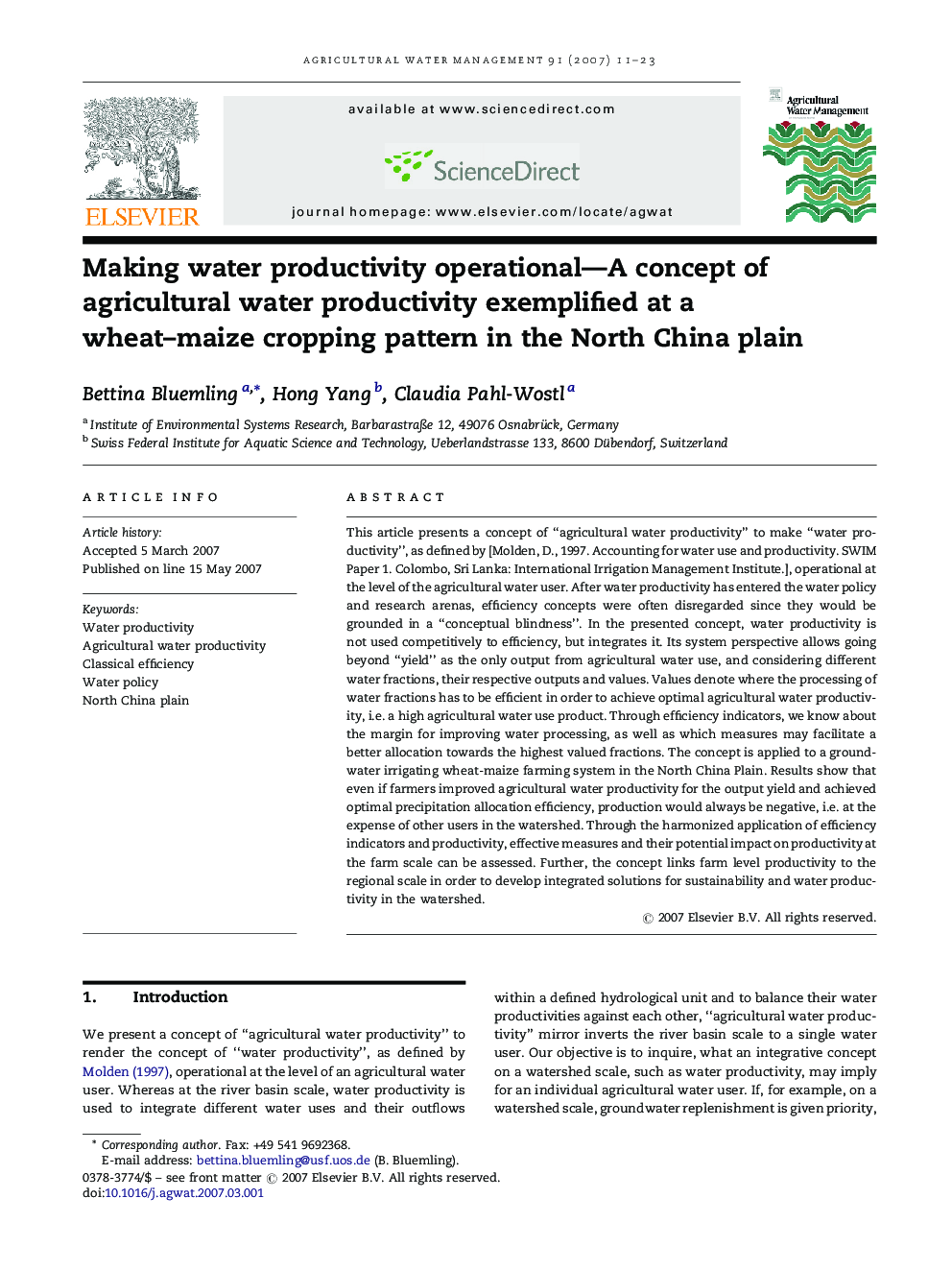| کد مقاله | کد نشریه | سال انتشار | مقاله انگلیسی | نسخه تمام متن |
|---|---|---|---|---|
| 4480327 | 1622981 | 2007 | 13 صفحه PDF | دانلود رایگان |

This article presents a concept of “agricultural water productivity” to make “water productivity”, as defined by [Molden, D., 1997. Accounting for water use and productivity. SWIM Paper 1. Colombo, Sri Lanka: International Irrigation Management Institute.], operational at the level of the agricultural water user. After water productivity has entered the water policy and research arenas, efficiency concepts were often disregarded since they would be grounded in a “conceptual blindness”. In the presented concept, water productivity is not used competitively to efficiency, but integrates it. Its system perspective allows going beyond “yield” as the only output from agricultural water use, and considering different water fractions, their respective outputs and values. Values denote where the processing of water fractions has to be efficient in order to achieve optimal agricultural water productivity, i.e. a high agricultural water use product. Through efficiency indicators, we know about the margin for improving water processing, as well as which measures may facilitate a better allocation towards the highest valued fractions. The concept is applied to a groundwater irrigating wheat-maize farming system in the North China Plain. Results show that even if farmers improved agricultural water productivity for the output yield and achieved optimal precipitation allocation efficiency, production would always be negative, i.e. at the expense of other users in the watershed. Through the harmonized application of efficiency indicators and productivity, effective measures and their potential impact on productivity at the farm scale can be assessed. Further, the concept links farm level productivity to the regional scale in order to develop integrated solutions for sustainability and water productivity in the watershed.
Journal: Agricultural Water Management - Volume 91, Issues 1–3, 16 July 2007, Pages 11–23